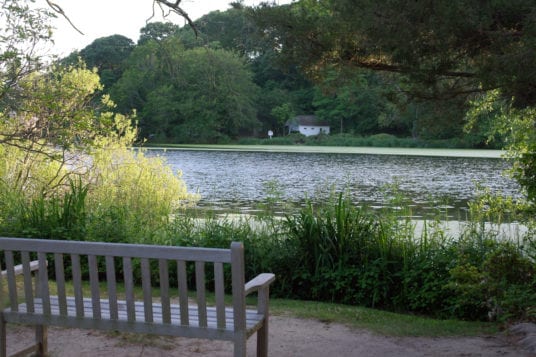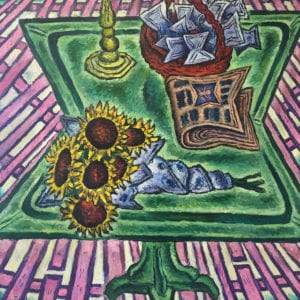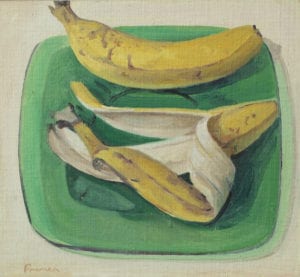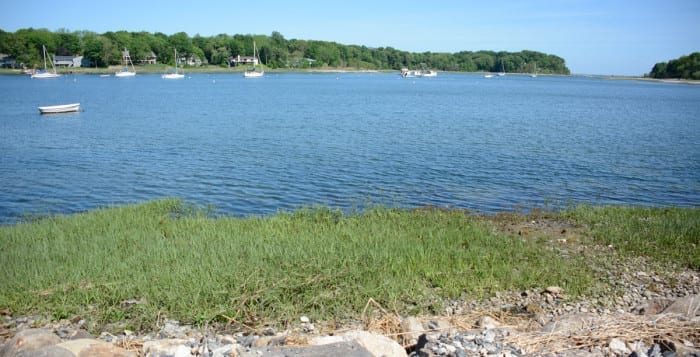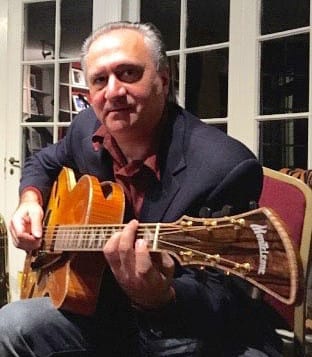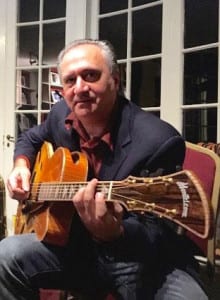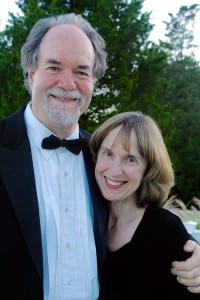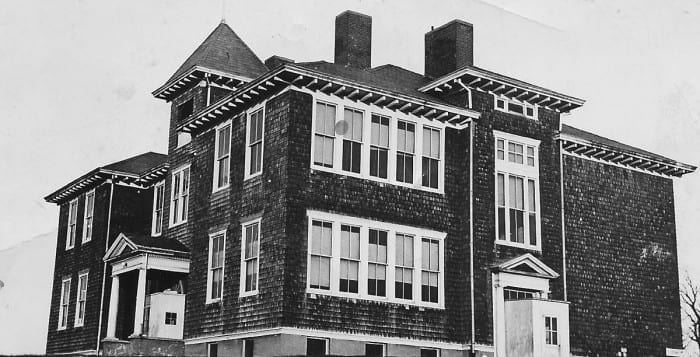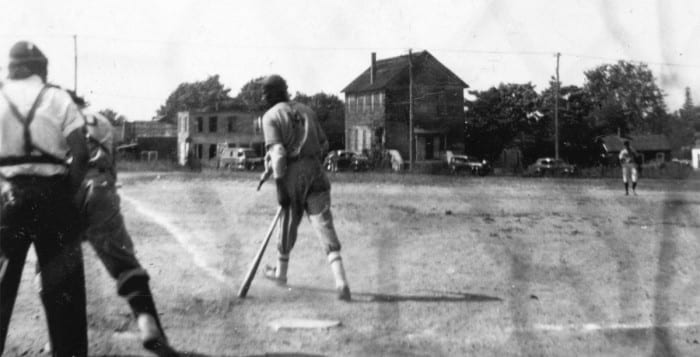By Katelyn Winter
Peaceful. The word most commonly used to describe Setauket’s Frank Melville Memorial Park captures the tranquil nature scene you find around every bend in the trail.
With turtles sunning themselves on logs in the daytime and deer rustling in the brush just before dusk, the park is a sanctuary for wildlife. According to the park’s newsletter, the Four Harbors Audubon Society, which holds a bird walk at the park on the second Saturday of every month, recorded 76 bird species over the past year. One of the main reasons so many creatures can be seen is simply the atmosphere. On the sign at the entryway to the park, the informative bullet points end in a gentle reminder: Quiet please.
Frank Melville Memorial Park’s gates have been open to the public for 79 years. In 1937, the park was formally dedicated after years of work by Jennie MacConnell Melville and local philanthropist Ward Melville, the wife and son of Frank Melville. The park was added to the National Register of Historic Places on July 19, 2010.
The Melville family loved to spend their summers in the Stony Brook area and even had an estate, named Sunwood, built in Old Field in 1919. It is fitting that the place they designed and built to memorialize a loving father and husband would turn into such a picturesque and beloved park by Three Village residents and visitors alike.
“I’ve been coming here for almost ten years. It’s only her second year, though,” said Kaleigh Gorman, motioning to her dog, Dakota, when they were out walking one warm Wednesday evening. “I love how peaceful and scenic the park is and all the memories that are made here.”
There is definitely a lot of room to make memories. With 24 stunning acres to explore, the park is made up of a looping path around the pond and trails that wind through the bamboo forest and the meadows behind the Bates Barn, known locally as “the red barn.” Constructed in the 1920s, the wood for the barn came from buildings at Camp Upton near Yaphank, which was torn down after WWI. A community garden with its own apiary and the Bates House, which can be rented for private events, are just some of the park’s other charming features.
Frank Melville Memorial Park
Hours:
Open all year round from dawn to dusk
Address:
1 Old Field Road, Setauket
Phone number:
Park Office: 631-689-6146
Bates House: 631-689-7054
Website:
www.frankmelvillepark.org
Rules:
No professional photography without park pass
Dogs allowed on leash
Visitors can go for a jog around the pond, stopping to stretch out on the stone bridge with a view of both the pond and the marshlands, or sit on one of several benches that line the edge of the pond under large shade trees. Just to the side of that bridge is the Setauket Mill, a simulated mill with a working water wheel. Built in 1937, it was designed by architect Richard Haviland Smythe, who also designed the Stony Brook Village Center, to represent the long line of mills that had existed on the pond as early as 1660. The building now serves as the park’s headquarters.
You should feel free to bring in snacks for a picnic, but keep in mind to carry out what you carry in, and never feed the wildlife. And watch out! That wildlife also includes a snapping turtle who will snap at anything that moves too close to his algae-covered face. He’s been around for ages. When I was just five years old, I thought I was looking at an otter emerging from the pond, until my mother realized it was the snapping turtle reaching out his long neck for a snack. The snapping turtle is by no means dangerous, though: just one more fun local “resident” to encounter. In fact, local resident Janet Morseman says that one of the reasons she loves coming to the Setauket park is because of how “safe and peaceful” it is.
Whether you are out for a brisk walk, a jog or a leisurely stroll, the ground beneath your feet is always clean, and the park, which is located next to the post office and just a short walk from Patriot’s Rock and Emma S. Clark Memorial Library, is small and well-enough trafficked to feel very safe.
The rules and regulations of Frank Melville Memorial Park, a “Private Park for Public Enjoyment,” are fairly lax and rely on common courtesy. If you’d like to ride your bike there, for example, it’s requested you stay on the paved pathway. Fishing in the pond requires you to join the Mill Pond Fishing Club, with a catch-and-release only policy.
And as far as photography in the park goes, anything more than snapping a picture of your kids with a cell phone (say, having a friend take your family holiday card photo at the park) means signing up to become a Friend of the Park and getting a photography pass. It will cost you $100 annually to be able to shoot photos in the park.
Those aren’t the only ways to take advantage of Frank Melville Memorial Park, though — it has so much to offer. Classes on Tuesday mornings at the Bates Barn — usually at 11 a.m. — are free ways to learn new skills, such as watercolor painting or have fun with a craft or scavenger hunt. One new opportunity is Walk-Yoga-Meditate-Chocolate, which is exactly what it sounds like. At 7 p.m. on Tuesday evenings through August 30, pre-registered participants will meet up in the Bates House parking lot to take a walk, practice yoga, mediate, and indulge in some chocolate. The class, by suggested donation, benefits the Community Growth Center. To learn more or register you can visit www.CommunityGrowthCenter.org or call 631-240-3471.
For those who are looking for a different way to relax, check out Wind Down Sundays, the park’s summer concert series held at the Bates Barn on Sunday evenings at 5:15 p.m. through Aug. 28. A variety of musicians will play classical, rock, jazz, reggae, R&B, and pop, which means there’s at least one Sunday you won’t want to miss, depending on your taste! These events are family-friendly ways to get outside and experience something new in a beautiful location.
So pack up the kids, or the dog, or just a water bottle, and see what Frank Melville Memorial Park has in store for you. You may discover a favorite jogging trail, the perfect bench for reading, or the cutest baby turtle you’ve ever seen. There’s so much to do and see, no matter the time of day. And that’s why Frank Melville Memorial Park is a treasure among us.
Author Katelyn Winter is a rising junior at Muhlenberg College in Allentown, Pa., majoring in English and creative writing. She is from Stony Brook and hopes to one day work in the publishing industry.







